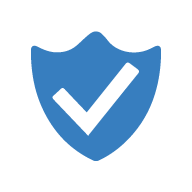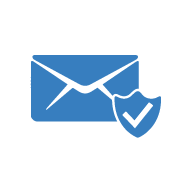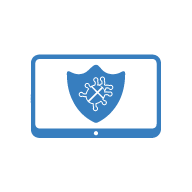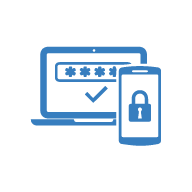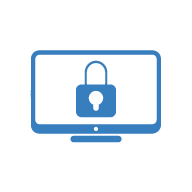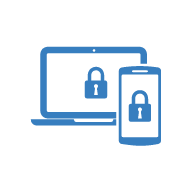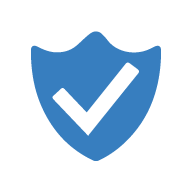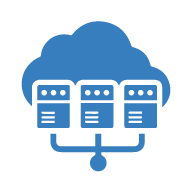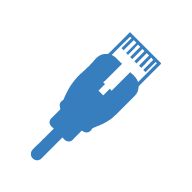Building Trust in AI Cybersecurity: Why Ethics & Governance Matter More Than Ever
Consider a world where artificial intelligence stops a cyberattack but accidentally blocks a hospital’s access to patient records. Doctors can’t treat emergencies. Lives hang in the balance. This isn’t science fiction, it’s a real risk if AI Governance and Ethics are ignored.
AI Governance and
Ethics are the guardrails that keep AI safe, fair, and transparent.
Think of them like traffic rules for AI systems. Just as stoplights prevent
accidents, governance stops AI from harming people.
For cybersecurity professionals, IT managers, and compliance
officers, these rules aren’t just paperwork. They’re survival tools. Without
them, AI could:
- Leak
private data by overlooking security gaps.
- Make
biased decisions that target innocent users.
- Amplify
cyber threats if hackers exploit poorly designed AI.
But organizations like the Global AI Ethics and Governance
Observatory are creating global standards to prevent disasters.
In this guide, you’ll discover:
- What
AI governance means (and why your team can’t ignore it).
- How
to spot hidden biases in AI tools, like a cybersecurity
detective.
Let’s get into it.
What is AI
Governance?
AI needs rules and ethics to work correctly. Without them, it
can cause problems. "Fast but biased" AI can lead to serious issues,
like: Many AI security tools have hidden biases, which can result in:
Flagging
innocent users as "high risk" due to their region or background.
Ignoring threats
from groups not included in the training data.
Leaking data if
privacy is not a priority.
This is why it's crucial to give ethics and governance a top priority in AI development to avoid these problems.
Why Ethics
Are Non-Negotiable in Cybersecurity AI
AI governance and ethics matter, not merely as a
nice-to-have addition. In the absence of them, AI is potentially harmful, similar
to a car without brakes.
The issue with "fast but biased" AI is that it has the potential to result in severe problems..
5 Key
Principles for Ethical AI in Cybersecurity
Building ethical AI isn’t magic, it’s about following clear
rules. Let’s break down the five principles that turn risky AI into a trustworthy
teammate:
1. Fairness
Fairness means testing AI with data from all groups young,
old, urban, rural. It's like educating a child: If you just expose them to one
genre of book, they will never know the entirety of the world.
Unfair
AI can have dire consequences, like locking out specific groups of
individuals. Consider, the hotel booking system that once denied disabled
travelers, changing only when it was taken to court. This addresses the need
for inclusive and fair AI systems that work for everyone, including the
disabled.
2.
Transparency
Transparency in AI is having knowledge of how decisions are
being made. It's as if you're following GPS directions, but instead of simply
being told to "turn left," you'd like to know why.
To accomplish this, you can use tools as:- AI explanation
systems that translate complex logic into simple language.
Audit trails that record every decision, providing a clear
record of what happened and why.
3. Privacy
Privacy means protecting user data and keeping it
confidential, like a locked diary. AI systems should only access this data with
permission.
To achieve this, consider using:
Encryption,
or concealing information to prevent other people from gaining access to it.
Complying with established guidelines and regulations,
such as data privacy and protection regulations, to ensure you're handling user
information ethically.
4.
Accountability
Accountability for AI is having a human team responsible,
controlling the actions of the system. Without management, things go wrong, as
in the case of a social media company's AI recommending harmful material to
minors.
5. Safety
Security in AI involves updating and refining the system
regularly, similar to how you recharge your phone. You see, hackers continually
learn and advance, so your AI needs to be in a position to keep up with emerging
threats.
To stay safe, consider:
Automating updates to help your AI learn from new threats.
Testing worst-case scenarios to prepare for potential problems.
Building
ethical AI is a process, not a perfect end goal. Start with one key
principle, such as fairness or privacy, and build from there. This approach
will benefit both your users and your organization.
Global
Perspectives (How the World is Shaping AI Rules)
AI Governance and Ethics look different in every country,
but one thing’s clear: The race to control AI is on. Let’s explore how major
regions are tackling it:
1. Europe’s
Strict AI Act
The EU's
AI Act prohibits "high-risk" AI in areas like hiring, law
enforcement, and education. Think of it as preventing potential disasters
before they occur.
Examples of "high-risk" AI include:
Facial recognition in public spaces (with some exceptions,
like finding missing children).
AI job interviews that analyze a person's tone or facial
expressions.
Social scoring systems that judge people's behavior.
Firms which flout these guidelines risk major fines. But
companies avoid getting fined using tools to examine whether their AI is in
conformity with EU regulation.
2. U.S. AI
Bill of Rights
The U.S.
AI approach emphasizes transparency and consent. Think of it like knowing
what's on your menu:
You should be informed when AI makes decisions about you,
such as loan approvals.
You have the option to opt out of AI systems in areas like
healthcare and education.
For example, a Texas hospital allowed patients to choose between
AI and human doctors, resulting in a significant increase in trust.
However, unlike some other regions, the U.S. guidelines are
currently voluntary, leaving some gaps in regulation.
3.China’s
AI Rules
China's
AI rules focus on control and surveillance. Companies must:
Store data within China's borders, avoiding foreign
servers.
Submit their algorithms for government review and
approval.
The objective is to have control over AI and its uses. For
example, China's version of TikTok employs AI to censor material, like videos
regarding protests.
The Global
Watchdog (UNESCO’s Observatory )
It acts like a UN for AI rules. It helps companies:
Compare AI laws across many countries.
Share stories of successful AI projects that follow ethical guidelines.
Avoid common pitfalls, such as biased AI systems.
This matters to different groups:
Businesses: If you're selling AI tools, follow the strictest
rules to operate globally.
Users: Check if your country's laws protect you from
unfair AI practices. If not, demand better protection.
Hackers: Identify and fix gaps in AI ethics to prevent
exploitation.
The most important thing is that AI ethics and governance
differ, but the intention is the same everywhere: to build AI for good, not for
harm.
Best
Practices for AI Governance Implementation
Putting AI Governance and Ethics into action isn’t rocket
science. Think of it like building a house, follow the blueprint, and you’ll
avoid leaks. Let’s break it down step by step:
1. Audit Your
AI Like a Doctor’s Checkup
Just like checking a car's brakes, AI systems need regular
health tests to detect biases and errors. To do this:
Use available tools to scan for hidden biases in your AI.
Ask questions such as: "Does our AI perform just as
well for different categories of users, e.g., rural and urban users?"
If you bypass this step, you may find yourself with
humiliating gaffes, such as a store suggesting coats to customers in a hot
state like Florida.
2. Team Up
Creating ethical AI requires collaboration among different
teams. Each team plays a role:
Lawyers identify potential legal issues.
IT experts address technical problems.
Ethics experts ask if the AI is fair and unbiased.
To make this work, consider:
Holding regular "AI ethics roundtables" to
discuss concerns and ideas.
Using collaboration tools for real-time feedback and
discussion.
Encouraging teams to find and report AI flaws by
recognizing and rewarding their efforts.
3. Train
Staff Like Teaching Kids to Cross the Street
Employees can’t fix what they don’t understand.
Run workshops to help people recognize and address biases
in AI systems.
Utilize available courses and training
programs focused on responsible AI practices.
4. Monitor
AI Like a Security Camera
Hackers evolve. Your AI must too.
Update AI models weekly (or after major
cyberattacks).
Set up alerts for sudden bias spikes.
For example, A
healthcare company updated its AI every Friday. In March 2023, this helped
block a ransomware attack targeting patient records.
Why This Matters to
You
For IT Teams: Audits prevent midnight emergencies (and
angry CEOs).
For Small Businesses: Training staff costs less than
lawsuits
For Everyone: Ethical AI = trust = customers =
growth.
AI Governance and Ethics aren’t a one-time task. They’re
daily habits, like brushing your teeth for cybersecurity.
Future
Trends
AI is evolving faster than ever. But with new power comes
new rules. Here’s what experts predict by 2030:
1. Stricter
Laws = Bigger Fines
The AI Liability Directive, says companies that use AI in
unfair ways might face significant penalties. These fines can be as high as €35
million or 7% of the business's yearly turnover. To keep in line, AI
systems might need to be inspected regularly, just like cars need to be checked
annually, to ensure they're being used fairly.
2. AI
Ethics Officers
Companies like Microsoft and Google already have AI ethics
teams. Soon, this role could be as common as HR managers.
What They’ll Do:
Review every AI update for biases.
Train staff on ethical risks (e.g., Why does our chatbot
sound rude?).
3. Public
Trust Scores
Think of evaluating a company's AI ethics like rating a
restaurant. Some platforms already score companies on transparency and fairness.
This is significant because 70%
of the users say that they would turn to an alternate brand if they don't
enjoy how a brand employs AI.
Stay Ahead of the Curve
Get involved in communities specifically for AI to
exchange best practices with peers.
Read reports from reputable sources, which predict that AI
laws will significantly impact global trade by 2025.
AI Governance and Ethics aren’t just fancy words, they’re
your shield against disasters. Here’s how to start today:
1. Audit Your AI:
Use available tools to check for fairness and bias.
2. Train Your Team:
Provide workshops or training to help them understand AI ethics, which can
reduce risks.
3. Ask "Is This
Ethical?": Carefully weigh each potential impact and thoroughly test
an AI tool before it is put into use.
The future of cybersecurity is not about outthinking
hackers, it's about out-caring them. Build AI that protects, includes, and
respects. Your customers (and conscience) will thank you.

